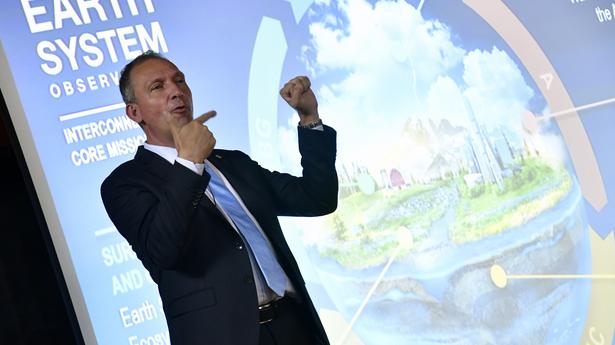
NISAR to arrive in India by February 2023: NASA scientists
The Hindu
It will help scientists to study aspects like the structural changes on the surface of the earth, climate change and prediction of hazardous events
The radar payload of NISAR, the ambitious joint space project of Indian Space Research Organisation (ISRO) and US space agency National Aeronautics and Space Administration (NASA), is scheduled to arrive to India by February 2023, said Thomas Zurbuchen, Associate Administrator, NASA Science Mission Directorate, while delivering a talk organised at the Indian Institute of Science (IISC) on Wednesday.
NISAR will help scientists to study aspects like the structural changes on the surface of the earth, climate change and prediction of hazardous events, amongst others.
NISAR, short for NASA-ISRO Synthetic Aperture Radar (NISAR), is currently being developed at a lab in Pasadena, California, USA. The team from NASA said that while the radar payload is fully electrically integrated, the work is underway for the 12 metre deployable boom and reflect radar antenna. “We are now going into testing stages – both launch configuration and functional testing – post which, the whole thing will be shifted back to India for integration on to the spacecraft and then on to the watch vehicle and the launch,” a scientist explained.
The scientists added that with its unique feed design, NISAR will illuminate an entire strip of the earth and sweep across for the received pulse, which will further allow scientists to see the changes in the position of earth’s surface, down to millimeters and centimeters. The sensors will help in the monitoring of melting of ice sheets in the polar regions, surface deformations to predict hazardous events, and determination of total bio mass which will have applications in agriculture and biodiversity. It will also help in water management by observing the minute changes in the earth’s surface which is traceable to underground water depletion.
Dr. Zurbuchen also talked about the “Earth System Observatory’ for the preservation of the planet. The observatory will have many applications in the field of Surface Biology and Geology, Aerosols, Mass change and many others, he said. He further spoke about NASA’s Open-Source Science Initiative under which, as the work on a project continues, ESO data, software and scientific results will be made openly available.
Taking a question from the audience about space tourism, which is trending now, Dr. Zurbuchen called it “a passionate set of projects funded by rich people”. He added, “It is hard to predict what space tourism will do and where it will end up as it depends on how much it excites you.” He also spoke about the problem of orbital debris or space garbage, being one of the biggest problems which requires many technical innovations.











